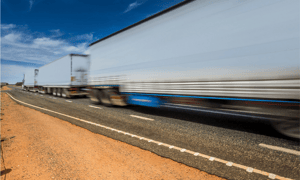The transport industry is ready for the introduction of automated heavy vehicles, but many of Australia’s regional and remote roads are not, according to research released by the Australian Road Research Board (ARRB).
ARRB found line marking and road signs in regional and remote areas are currently a barrier to the successful deployment of automated heavy vehicles. The automated operation of truck platooning promises safer, more cost-effective and environmentally better freight delivery throughout Australia and New Zealand.
The research, published in a new Austroads report, has challenged the common understanding that connection to the cellular network is a requirement for automated vehicles in “platooning” situations, stating that “although it provides additional robustness, cellular connection is not a necessity”.
While the research shows the heavy vehicle industry is ready and willing to introduce automated heavy vehicles as soon as possible, line markings and road signs in regional and remote areas are the first port of call for releasing the handbrake on progress.
The successful introduction of automated heavy vehicles could revolutionise freight and logistics in Australia and New Zealand.
The most prominent application of heavy vehicle automation is platooning, which involves two or more trucks operating in a “connected” convoy operating at much smaller headways than is usually permitted.
The Austroads report provides a roadmap for introducing automated heavy vehicles into regional Australia and New Zealand, identifying opportunities for their future use and the boundaries that currently prevent their use.
You can find the full Austroads report here
